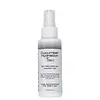What's inside
What's inside
 Key Ingredients
Key Ingredients

 Benefits
Benefits

 Concerns
Concerns

 Ingredients Side-by-side
Ingredients Side-by-side

Water
Skin ConditioningEthylhexyl Palmitate
EmollientCaprylic/Capric Triglyceride
MaskingCoco-Caprylate
EmollientSimmondsia Chinensis Seed Oil
EmollientCaprae Lac
Skin ConditioningColostrum
Skin ConditioningBifida Ferment Lysate
Skin ConditioningLactose
HumectantMilk Protein
Skin ConditioningArtemisia Capillaris Extract
Hyaluronic Acid
HumectantSqualane
EmollientAloe Barbadensis Leaf Water
MaskingEryngium Alpinum Flower Extract
Skin ConditioningChamomilla Recutita Flower Extract
MaskingHoney Extract
HumectantHippophae Rhamnoides Oil
EmollientSymphytum Officinale Leaf Extract
Skin ConditioningHydrolyzed Jojoba Esters
Skin ConditioningGlycerin
HumectantSodium Chloride
MaskingHydroxyacetophenone
AntioxidantPentaerythrityl Tetra-Di-T-Butyl Hydroxyhydrocinnamate
AntioxidantHydrocinnamyl Cinnamate
PerfumingEthylhexylglycerin
Skin ConditioningPropanediol
SolventTocopherol
AntioxidantWhey Protein
Skin ConditioningC10-18 Triglycerides
EmollientLecithin
EmollientWater, Ethylhexyl Palmitate, Caprylic/Capric Triglyceride, Coco-Caprylate, Simmondsia Chinensis Seed Oil, Caprae Lac, Colostrum, Bifida Ferment Lysate, Lactose, Milk Protein, Artemisia Capillaris Extract, Hyaluronic Acid, Squalane, Aloe Barbadensis Leaf Water, Eryngium Alpinum Flower Extract, Chamomilla Recutita Flower Extract, Honey Extract, Hippophae Rhamnoides Oil, Symphytum Officinale Leaf Extract, Hydrolyzed Jojoba Esters, Glycerin, Sodium Chloride, Hydroxyacetophenone, Pentaerythrityl Tetra-Di-T-Butyl Hydroxyhydrocinnamate, Hydrocinnamyl Cinnamate, Ethylhexylglycerin, Propanediol, Tocopherol, Whey Protein, C10-18 Triglycerides, Lecithin
Hamamelis Virginiana Water
AstringentWater
Skin ConditioningAlcohol Denat.
AntimicrobialGlycerin
HumectantPolysorbate 20
EmulsifyingCerium Oxide
Sodium PCA
HumectantCucumis Sativus Fruit Extract
EmollientFructooligosaccharides
HumectantGlucosamine Hcl
Honey
HumectantPhospholipids
Skin ConditioningCommiphora Myrrha Oil
MaskingSphingolipids
EmollientHyaluronic Acid
HumectantBorago Officinalis Seed Oil
EmollientCucumis Sativus Oil
EmollientBenzyl Alcohol
PerfumingPhenoxyethanol
PreservativeParfum
MaskingHamamelis Virginiana Water, Water, Alcohol Denat., Glycerin, Polysorbate 20, Cerium Oxide, Sodium PCA, Cucumis Sativus Fruit Extract, Fructooligosaccharides, Glucosamine Hcl, Honey, Phospholipids, Commiphora Myrrha Oil, Sphingolipids, Hyaluronic Acid, Borago Officinalis Seed Oil, Cucumis Sativus Oil, Benzyl Alcohol, Phenoxyethanol, Parfum
 Reviews
Reviews

Alternatives
Ingredients Explained
These ingredients are found in both products.
Ingredients higher up in an ingredient list are typically present in a larger amount.
Glycerin is already naturally found in your skin. It helps moisturize and protect your skin.
A study from 2016 found glycerin to be more effective as a humectant than AHAs and hyaluronic acid.
As a humectant, it helps the skin stay hydrated by pulling moisture to your skin. The low molecular weight of glycerin allows it to pull moisture into the deeper layers of your skin.
Hydrated skin improves your skin barrier; Your skin barrier helps protect against irritants and bacteria.
Glycerin has also been found to have antimicrobial and antiviral properties. Due to these properties, glycerin is often used in wound and burn treatments.
In cosmetics, glycerin is usually derived from plants such as soybean or palm. However, it can also be sourced from animals, such as tallow or animal fat.
This ingredient is organic, colorless, odorless, and non-toxic.
Glycerin is the name for this ingredient in American English. British English uses Glycerol/Glycerine.
Learn more about GlycerinHyaluronic acid is naturally found in healthy skin. It is a humectant, meaning it draws moisture to your skin.
This ingredient helps hydrate, soothe, and protect the skin.
What makes hyaluronic acid so hydrating? It has the capacity to bind or hold large amounts of water.
Fun fact: It is already naturally found in our bodies, such as the fluids of our eyes and our joints.
Studies find this ingredient to have anti-inflammatory and anti-microbial properties. This can help speed up wound-healing.
Hyaluronic acid can be irritating if the molecule has a low-molecular weight, or if the molecules are small.
One study found low-molecular weight hyaluronic acid to be pro-inflammatory, meaning some people may experience irritation. This is because our bodies use hyaluronic acid in the wound-healing process to signal to our bodies, via irritation, that something needs healing.
The same study found high-molecular weight hyaluronic acid to be anti-inflammatory.
These are some other common types of Hyaluronic Acid:
Learn more about Hyaluronic AcidWater. It's the most common cosmetic ingredient of all. You'll usually see it at the top of ingredient lists, meaning that it makes up the largest part of the product.
So why is it so popular? Water most often acts as a solvent - this means that it helps dissolve other ingredients into the formulation.
You'll also recognize water as that liquid we all need to stay alive. If you see this, drink a glass of water. Stay hydrated!
Learn more about Water